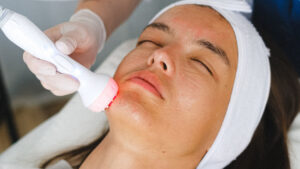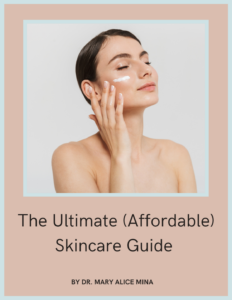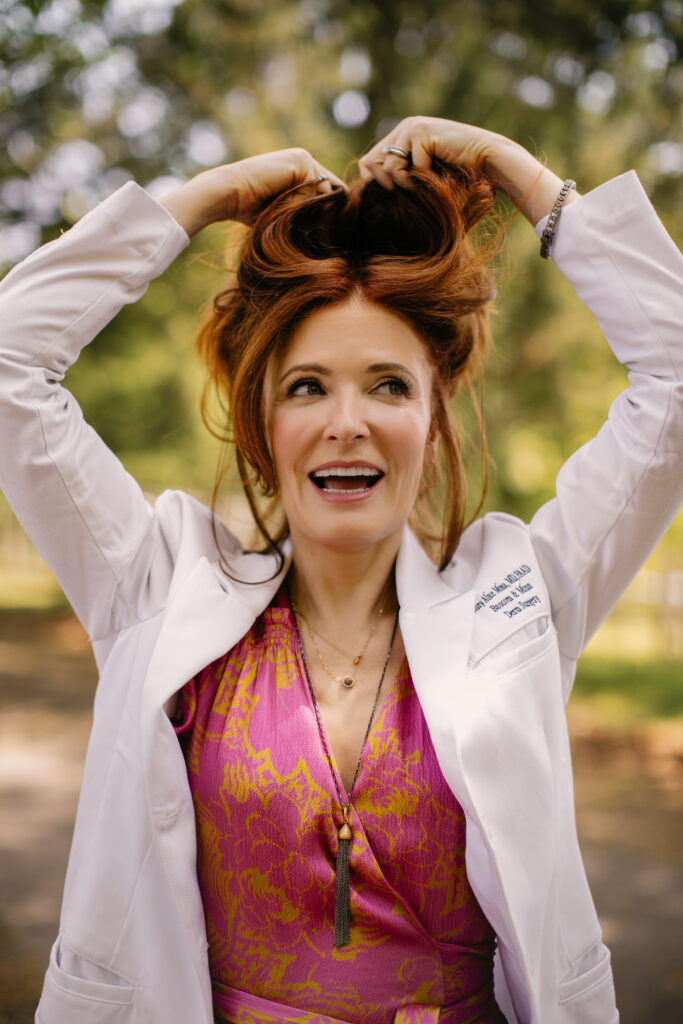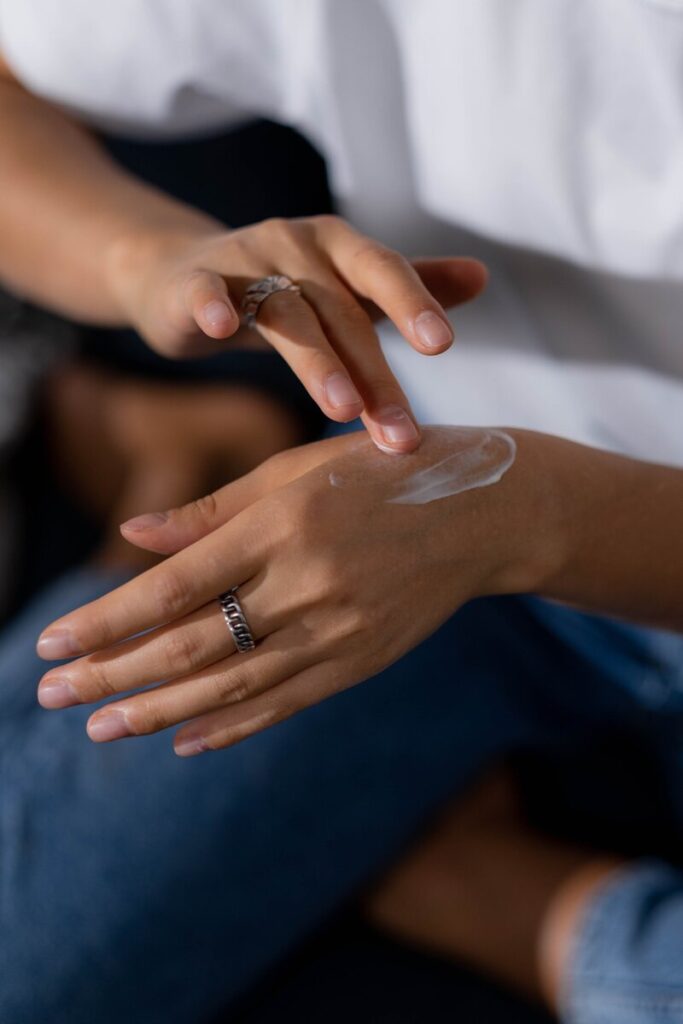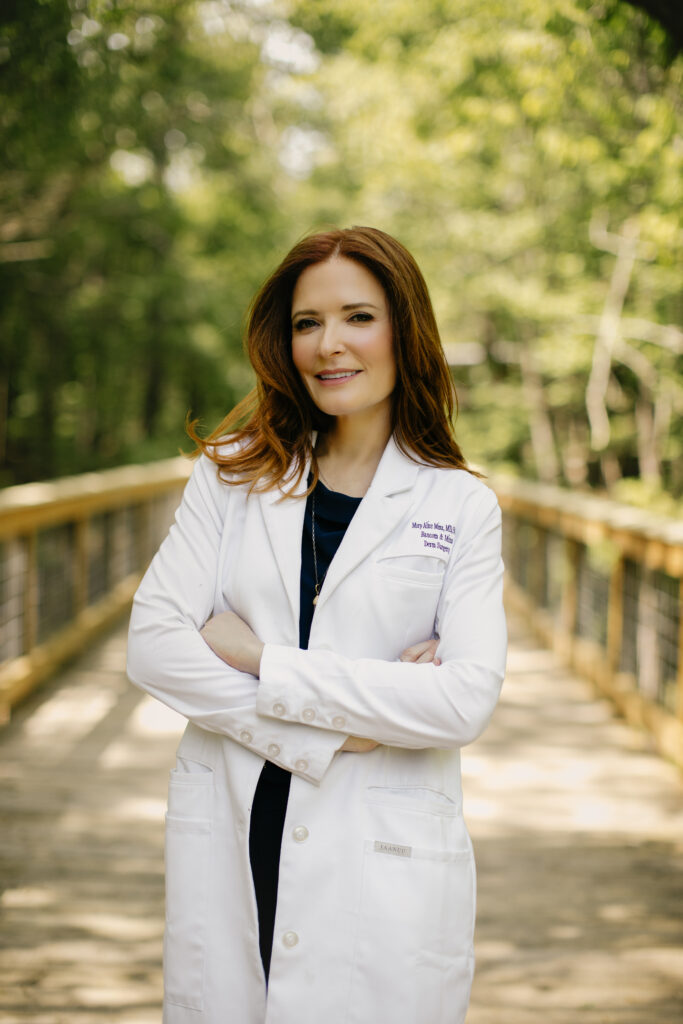If you’re a parent, you’ve probably questioned what’s truly safe for your child’s skin. From the great sunscreen debate to managing chronic eczema, it’s easy to feel overwhelmed and even misled by the sheer volume of information out there.
As a board-certified dermatologist and mother, I want to simplify this conversation. Because here’s the truth: skincare for your child doesn’t have to be complicated. You don’t need a dozen products or a medical degree to make smart choices. You just need a few basics and a little clarity on what actually works.
So, let’s break it down.
Is Sunscreen Safe for Kids?
One of the most common questions I get as a dermatologist is, “Is sunscreen safe for children?” The short answer? Yes.
A 2019 FDA study found that certain chemical sunscreen ingredients can be absorbed into the bloodstream. But what the media often skips? That study didn’t show harm, just absorption.
If you’re concerned, mineral sunscreens are a great option. Look for zinc oxide or titanium dioxide on the label. These ingredients sit on top of the skin and reflect UV rays, rather than being absorbed.
Pediatric Sunscreen Tips:
- Under 6 months: Stick to shade, wide-brimmed hats, and UPF clothing.
- Over 6 months: Apply a broad-spectrum mineral sunscreen for kids every two hours.
- Pro tip: Use rash guards and sun hats to cut down on how much sunscreen you need.
Bug Bites and Repellents: What Works (and What’s Safe)
The most effective and safe insect repellent for children? DEET (10–30%). Despite the bad press, it’s well-studied and widely recommended by dermatologists and pediatricians.
Prefer not to apply directly to skin? Spray clothes instead. Long sleeves and pants go a long way. And if your child does get bitten, a dab of hydrocortisone cream (OTC) can ease the itch fast. The goal is to stop the scratch cycle before it leads to infection.
Eczema in Children: It’s Not About Diet
Cutting out dairy, gluten, eggs or whatever else Instagram is warning about this week is rarely the answer. Eczema is a skin barrier issue. It means moisture is escaping and irritants are sneaking in. That’s what causes the inflammation, the redness, the itching.
So, how do you treat it?
- Soak: Give your child a plain water bath (no soap!) for 10 minutes.
- Smear: While the skin is still damp, apply a thick moisturizer, preferably plain petroleum jelly.
- Target: If using medication, apply it first to rash areas, then moisturize the rest.
Keep this up consistently and you’ll see major improvements.
Bleach Baths: Not as Harsh as They Sound
The term “bleach bath” can make any parent pause. But when used correctly, it’s safe and can actually help with moderate to severe eczema.Think of it like a diluted pool soak—¼ to ½ cup of plain, fragrance-free bleach in a full bathtub of water (or a capful for baby tubs). Soak for 10 minutes, rinse off, then moisturize..
Bleach baths may reduce bacteria on the skin and support healing, but they’re not for everyone. Check with your dermatologist before starting them.
Treating Cuts, Scrapes, and Wounds: The Truth
Old advice says “let it scab over.” New advice? Keep it moist. Here’s what we do in dermatology:
- Wash with mild soap and water.
- Apply a thin layer of petroleum jelly (not Neosporin as it causes allergies more often than it prevents infections).
- Cover with a bandage.
Think of it like a green lawn. You want that wound bed moist and healthy so skin can grow back smoothly. A thick scab is a boulder on your lawn. No thanks!
Simple Skincare: What Kids Actually Need
We’re living in the age of 10-step routines, but your child doesn’t need that.
Here’s what most kids need:
- Gentle, fragrance-free cleanser (or plain water)
- Mineral sunscreen
- Thick, fragrance-free moisturizer
- Prescription cream for eczema or flare-ups (if prescribed)
That’s it. Skip the scented lotions, trendy TikTok routines, and anti-aging serums. Your child’s skin is doing just fine without them.
If your child has persistent skin issues that aren’t improving, it’s time to see a dermatologist.That’s what we’re here for.
And if no one’s told you this today: You’re doing a great job. Caring about your child’s skin is one more way you’re showing up, and it matters!
This week on THE SKIN REAL, I’m joined by Dr. Luke Johnson, pediatric dermatologist at the University of Utah and co-host of the Dermasphere podcast. We’re breaking down the biggest skincare questions parents face, from sunscreen safety to eczema myths with clear, science-backed answers. Check it out here.


